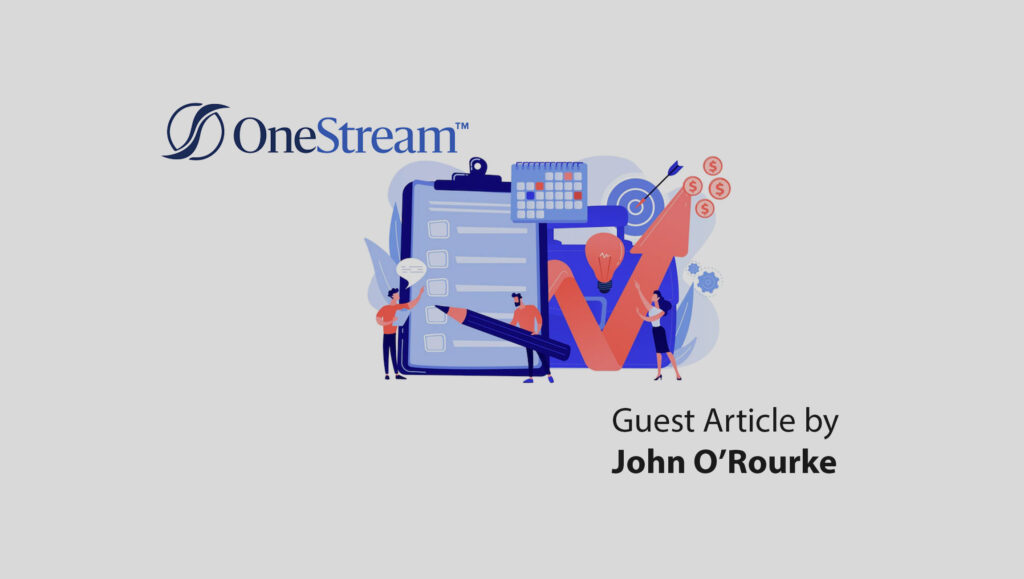With current volatility and market competitiveness, organizational leaders are being tasked now more than ever to have real-time data and insights to drive more effective decision-making. The stakes are high to get it right.
Enter: Corporate Performance Management (CPM).
According to Gartner, CPM is an umbrella term used to describe the software, processes, and systems that can monitor business performance. CPM helps “manage” an enterprise by providing leaders visibility into their data at all levels across the organization. When used correctly, it offers a critical link between corporate strategy and execution.
CPM tools aggregate important operational and financial data across the enterprise to equip teams with essential information to make key business decisions. A reliable CPM system frees up employee time from data gathering to focusing on more value-adding tasks – a solution that benefits everyone.
Getting Started
There are six steps in the CPM process that organizations typically follow in order to create a reliable, continuous management cycle.
Set goals. Whether ROI, targeted revenue, customer retention, or environmental, social, and governance (ESG) metrics, businesses ought to start with establishing goals to track against and work towards.
Model different scenarios. Knowing what factors and scenarios impact an organization’s key performance drivers is crucial. Consider data points such as the number of orders, returns, new customers, and other factors that create different scenarios. From there, organizations can solidify strategic plans for these various scenarios which translate into annual budgets and operating plans.
Plan. Start at the top. Map out how organizational goals will become reality within budgeting processes and consider how corporate strategy impacts the annual operating plan. As the enterprise plan trickles down, individual departments can ensure their own plans are aligned with corporate goals.
Consolidate. Create a healthy and regular cadence for closing the books and reviewing the results. Monthly is the most common interval to gather financial results and take a snapshot of the enterprise’s health.
Report. Presenting the financial performance and operating results to internal and external stakeholders is important to support informed decision-making. Reports can be in the form of financial statements, management reports, board books or regulatory filings, but timely delivery of results to stakeholders is a critical step.
Analyze. Understand how the actual results compared with predicted or planned results. If there is a variance, what caused it? Look at how the data compares to prior periods and comb through the results across departments, product lines, and channels to truly understand business performance.
Organizations that have taken the time to establish a modern, repeatable, and closed-loop CPM process are in the best position to reap the rewards.
Read More: SalesTechStar Interview with Aaron Froberg, Senior Director of Value Acceleration at Egnyte
A Look at the Benefits
There is a reasonable amount of investment – whether time or money – on the front end of establishing an effective CPM process, but the short- and long-term benefits are worthwhile.
CPM software offers increased efficiency and the ability for finance and operations teams to make informed decisions with more timely, accurate data. With a standardized, streamlined reporting process, there is better traceability and control – reducing risk and potential errors when reporting to regulators and other stakeholders.
Having agile and aligned planning, reporting and forecasting processes helps increase business agility and the ability to respond quickly to new market opportunities or risks. It also helps ensure that Finance and operations are aligned on revenue expectations, hiring and spending plans, and eliminates corporate silos and disjointed budgets.
CPM solutions address inconsistent data by providing managers a common view of financial and operating results across multiple subsidiaries, departments and levels within an organization. Employees can feel empowered to provide leadership with responses in a matter of hours rather than weeks with the right CPM solution. With a single version of the truth risks and uncertainty decrease significantly.
Read More: Top 4 Ways To Improve Your E-Commerce Purchase Process
Mastering the Approach
There are three common technology approaches for organizations that are ready to execute a closed-loop CPM cycle – spreadsheets, point applications, and unified CPM software. Spreadsheets are a widely available and attractive option for small businesses but become less viable as organizations mature and grow. More advanced options include point applications and unified CPM software, which offer more in-depth functionality and scalability. Point applications are designed to support specific functions like goal setting or consolidation, so multiple tools are needed to achieve the functional advantages of a unified CPM solution. There is an approach for any business no matter how mature or where they are in their digital transformation efforts.
Organizations of any size can benefit from having the proper corporate performance management (CPM) solution in place to help bridge strategy and execution. Increased visibility into operational and financial performance often comes with improved decisions – in hiring, investments, allocations, etc. – and leadership can feel confident making informed and timely business decisions to ensure success in today’s business landscape.




















